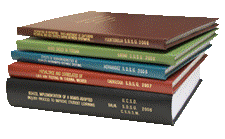Libraries, University of Nebraska-Lincoln

Archival Master’s Theses from the University of Nebraska-Lincoln
Date of this Version
6-1965
Document Type
Thesis
Citation
Thesis (M.S.)—University of Nebraska—Lincoln, 1965. Department of Agricultural Engineering.
Abstract
Spontaneous heating may raise the temperature in some portion of a stack of hay to the ignition point. The resulting fire destroys both the stack of hay and its enclosure. In order to minimize both handling and storage losses it is necessary to know more precisely what conditions cause spontaneous heating and what conditions will prevent it.
To better understand the causes of spontaneous heating it is essential to be able to determine separately the effects of significant variables on the spontaneous heating rate. These variables include moisture content, density, temperature, and air supply. The hay samples studied should be small enough so that they can be made homogeneous. Each sample should be maintained under constant conditions during spontaneous heating so that the change of heating rate with time can be independently determined. These requirements indicate a need for a laboratory study.
Therefore, a laboratory method for determining the spontaneous heating rates of hay samples under various steady state conditions will be useful in two respects. First, the method can be used to find the rate at which heat is generated and must be transferred out of the hay. Second, quantitative values for the rate of spontaneous heating will permit the development of methods to measure accurately the heat transfer properties of spontaneously heating hay.
As a result, the objectives of this study are: 1) to develop a method for using an adiabatic calorimeter to determine the spontaneous heating rate of hay in a closed container 2) to describe the effects of moisture content and air supply on the spontaneous heating rate-time relationship for ground alfalfa hay.
Advisor: John R. Davis


Comments
Copyright 1965, the author. Used by permission.